Disclosure: I only recommend products I would use myself and all opinions expressed here are my own. This post may contain affiliate links that at no additional cost to you, I may earn a small commission. Read the full privacy policy here.
So, you want to learn to quilt.
But where do you begin?
In this multipart series, I will guide you from start to finish.
To start you off, here is a list of supplies you will need.
Sewing Machine
Which sewing machine you use will be a personal choice. I know many quilters, and they all have vastly different sewing machines. You will need a sewing machine with a straight stitch, needle down option, walking foot, the ability to drop your feed dogs, and a free motion foot.
Scissors
You will be using thread snips the most. I love my Ginghers. But I also have a pair of very sharp and pointy Olfa snips.
Seam Ripper

Every award-winning quilter is an expert at ripping seams. It is inevitable. I have many seam rippers. You can go with the inexpensive route with this one but go with the smaller tipped seam ripper.
But my favorite is the Clover Seam Ripper. The handle fits nicely in my hand.
Needles
Sewing machine needles
For your sewing machine, you will need and size 80/12 universal needle or sharp needle for piecing. I use universals for this.
For quilting, you will need a 90/14, 100/16 or 110/18 needle size. You will want a quilting or a topstitch needle. These will go through your quilt sandwich smoothly, giving you a more consistent stitch.
Hand Needles
The only time I use a hand needle is finishing the binding on the edge of the quilt. My preference is milliners or straw needles, size 9 or 10. I also use thimble pads when hand sewing.
Rotary Cutting Mats
Rotary Cutting Mats are also known as self-healing cutting mats. If you are to purchase just one, get an 18” x 24” mat. Quilting fabric is approximately 44” wide. When folded in half, selvage edge to selvage edge, it’s 22”. Thus a 24” mat will work best if cutting from fold to selvage edge.
Rotary Cutters
There are many rotary cutters to choose from. Safety is the biggest issue with rotary cutters. Always close your rotary cutter when it is not in use. With that said, some rotary cutters automatically close, which is my preference.
The 45 mm is the most common size for rotary cutters. I like the 60mm when cutting multiple layers. I own both the 45 mm and 60 mm Olfa Deluxe Handle cutters that automatically close.
Unlike scissors, most rotary cutters can easily switch for left or right-handed users. All you need to do is put the cutting blade on the correct side for your needs. Just follow the instructions that come with your rotary cutter.
Rotary Cutting Rulers
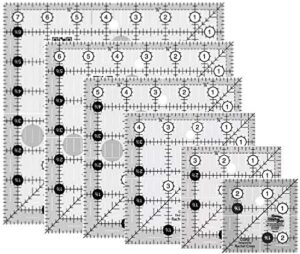
If you think there are too many mats and cutter choices, ruler choices will blow your mind. There are always new rulers coming out. But to start with I would recommend two, a 6½” x 24½” and a 10½” or 12½” square.
Rotary Cutting Glove
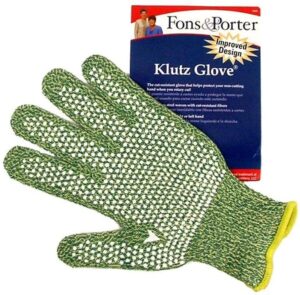
As I noted before, safety is vital with rotary cutters. A Klutz Glove is available for your non-dominant hand. This glove is made from cut-resistant fibers and has grip dots to help you control the ruler. I highly recommend you purchase one of these gloves. Your fingers will be grateful.
Note: at the time of this post the klutz glove was not available through Amazon.
Pins
A box of quilting pins will get you started. As you progress, I would recommend three different pins: the Clover glass head pins, fork pins, and flower head pins. The Clover brand of pins are sharp and thin.
Thread
The thread for piecing is generally 100% cotton. A 50 weight is best for piecing. I like the Superior Masterpiece brand thread for piecing. Aurofil also has a nice 50 weight thread.
The colors needed for piecing will be light grey, white, beige, or black. Light grey thread blends well with most fabric colors. I use a light grey for the majority of my piecing.
Thread for quilting comes in different fiber content, usually cotton, polyester, or a blend. The thread weight can be from 100 (very lightweight) to 12 (very heavy). It depends on how much you want the thread to take precedence. Sometimes you want the thread to take a back seat to the piercing.
Never use hand quilting thread in a sewing machine. Hand quilting thread has a coating to help it glide through the quilt sandwich. This coating can gum up the workings of your sewing machine.
Fabric
100% quilting cotton is the favored fabric of most quilters. Purchase the best fabric you can afford. I prefer “quilt shop” fabric. It is better quality than most of the big box store fabric.
The woman who taught me to knit imparted her wisdom. You are putting your time and effort into a product. You want to start with good quality products to achieve a good quality result.
How much fabric you need will be determined by what quilt you want to make. Patterns will give you the number of different fabrics required and how much of each you need.
Batting
Batting is the material that goes between the quilt top and the backing. This is what gives the quilt its insulation properties.
Batting is available in many different fiber contents, 100% cotton, polyester, wool, silk, Tencel, and many blends. It also comes in different weights. Your choices here will depend on your quilt type and its use. For your first quilt, I would recommend cotton batting. It is one of the easiest to use and the most traditional.
Iron and Ironing Board
An iron is a must-have tool for quilting. A well-pressed seam is necessary for accuracy.
A large ironing surface is nice when pressing yardage. Big boards go over your standard ironing board to give you a large ironing surface.
What’s Next?
Next will be pattern choices. There are many available which are great for beginners. But I have a simple quilt pattern free for your first quilt.
Wow, that’s a lot of information. In future posts, I will go more in-depth as we progress through how to make a quilt.
Send me any questions you may have at this point.


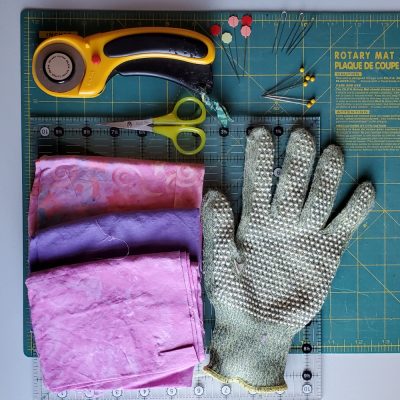
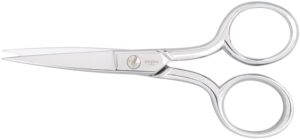
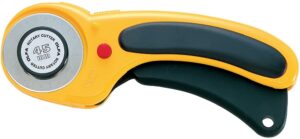
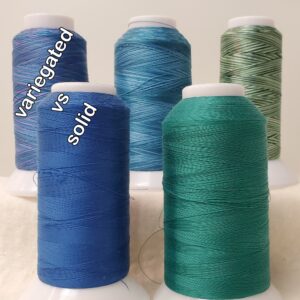
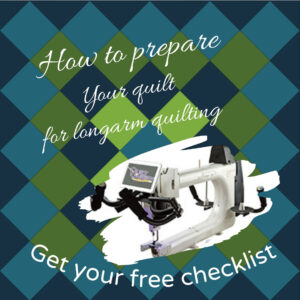
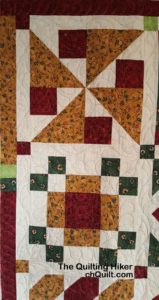

2 Responses
Thanks!
Thanks!